“Contextual Intelligence is a concept and a way to discern what is going on around you in real time. It is a way to be adaptive and responsive to unexpected, unforeseen change which is constantly around us. For a manager, it is critically important to stay ahead of those changes and maybe even be the implementer of change. Contextual intelligence is a way to do that. Contextual intelligence is being able to understand the world we live in. When we change environment, being able to adapt to this situational change is what contextual intelligence does.” – Dr.Matt Kutz, P.h.D in Global Leadership, author of the book “Contextual Intelligence” (2015).
Dr. Matthew Kutz’s Contextual Intelligence Profile describes a requirement of reframing ones thinking. Three aspects need to be integrated into your thinking; 1) starting to react to the world as a complex world and not a complicated world, 2) synchronicity: making meaning out of apparently irrelevant experiences/memories, 3) tacit knowledge: making use of the things we know to be true, but we don’t know why we know that (non- measurable knowledge) as opposed to explicit knowledge. Furthermore, Kutz defines 12 specific behavior in order to become a successful, contextual intelligent leader.
Our group would like to point out these 12 significant behaviors and visualized them with pictures from Bruxelles. The pictures are used as methaphors, the description is always below the picture: Enjoy!
 1) Diagnoses context ‒ describes the awareness of and identification of the different variables that contribute to subtle or dramatic shifts in your surroundings.
1) Diagnoses context ‒ describes the awareness of and identification of the different variables that contribute to subtle or dramatic shifts in your surroundings.
The following photograph depicts Tintin and captain Haddock diagnosing a situation in order to take appropriate actions. This is comparable to an individual who has the ability to analyze his surrounding and adapt his actions behavior to the context.
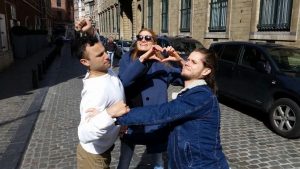 2) Consensus builder‒ defines the articulation of the value of conflicting ideas, convinces people to see common benefit of different points of view.
2) Consensus builder‒ defines the articulation of the value of conflicting ideas, convinces people to see common benefit of different points of view.
Individuals who display these characteristics function as peacemakers such as on the photograph.
 3) Change agent ‒ defines the identification of behaviors and attitudes that contribute toward maintaining the status quo and is able to address them in a nonthreatening manner.
3) Change agent ‒ defines the identification of behaviors and attitudes that contribute toward maintaining the status quo and is able to address them in a nonthreatening manner.
Our group functioned as change agents as we encouraged this man to transfer his communication to a digital channel. In order to be more ecofriendly and increase his communication reach.
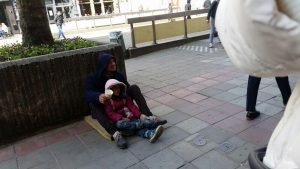 4) Effective use of influence ‒ describes projection of a desirable persona based on an accurate awareness of how others perceive you. Is aware of how your own actions affect and how others perceive you.
4) Effective use of influence ‒ describes projection of a desirable persona based on an accurate awareness of how others perceive you. Is aware of how your own actions affect and how others perceive you.
This homeless man’s begging appealed to our empathy so that our group had the feeling that we must donate something in order to be perceived in a positive way.
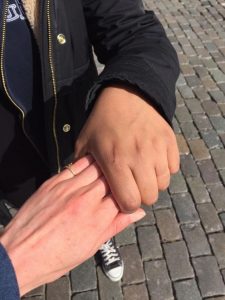 5) Multicultural leadership ‒ builds rapport by seeking to understand the values and motives of individuals and groups with different ethnic and cultural backgrounds.
5) Multicultural leadership ‒ builds rapport by seeking to understand the values and motives of individuals and groups with different ethnic and cultural backgrounds.
This light and dark skinned hand represent multiculturalism and intercultural understanding.
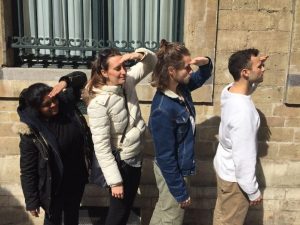 6) Mission minded ‒ can identify your own behaviors and attitudes that influence how others perceive a group or organization you are representing.
6) Mission minded ‒ can identify your own behaviors and attitudes that influence how others perceive a group or organization you are representing.
This picture shows our group being ready for the mission ! 🙂
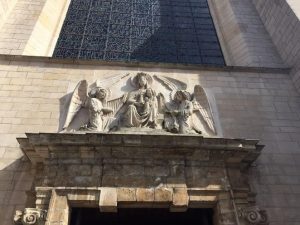 7) Influencer – Uses interpersonal skills to ethically and non-coercively affect the actions and decisions of others.
7) Influencer – Uses interpersonal skills to ethically and non-coercively affect the actions and decisions of others.
The religion should be a symbol for having an influence on ones ethical behavior.
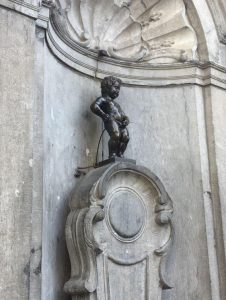 8) Culturally sensitive – Promotes diversity in multiple contexts and aligns diverse individuals by creating and facilitating diversity and provides opportunities for diverse members to interact in non-discriminatory manner.
8) Culturally sensitive – Promotes diversity in multiple contexts and aligns diverse individuals by creating and facilitating diversity and provides opportunities for diverse members to interact in non-discriminatory manner.
This pictures is a methaphor for diversity, if female or male, European or Amerian, everybody is different.
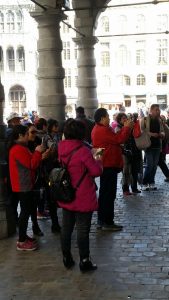 9) Communitarian – Expresses concern about social trends and issues (encourages legislation and policy when appropriate) and volunteers in social and community activities.
9) Communitarian – Expresses concern about social trends and issues (encourages legislation and policy when appropriate) and volunteers in social and community activities.
This picture illustrates a community, such as the chinese community carrying their own social trends, cultures and values
 10) Future minded – Has a forward-looking mentality and sense of direction and concern for where the organization should be in the future.
10) Future minded – Has a forward-looking mentality and sense of direction and concern for where the organization should be in the future.
The arrow shows the future –> dont look back, look ahead!! 🙂
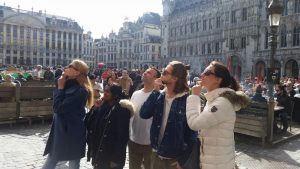 11) Critical thinker – Cognitive ability to make connections, integrate, and make practical application of different actions, opinions, and information.
11) Critical thinker – Cognitive ability to make connections, integrate, and make practical application of different actions, opinions, and information.
The group thinks not once, but twice! 🙂 Is the main square really made with gold????
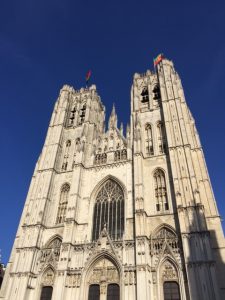 12) Intentional leader – Assesses and evaluates own leadership performance and is aware of strengths and weaknesses. Takes intentional action toward continuous improvement of leadership ability. Has an action guide and delineated goals for achieving personal best.
12) Intentional leader – Assesses and evaluates own leadership performance and is aware of strengths and weaknesses. Takes intentional action toward continuous improvement of leadership ability. Has an action guide and delineated goals for achieving personal best.
Thank you!
Group 1
